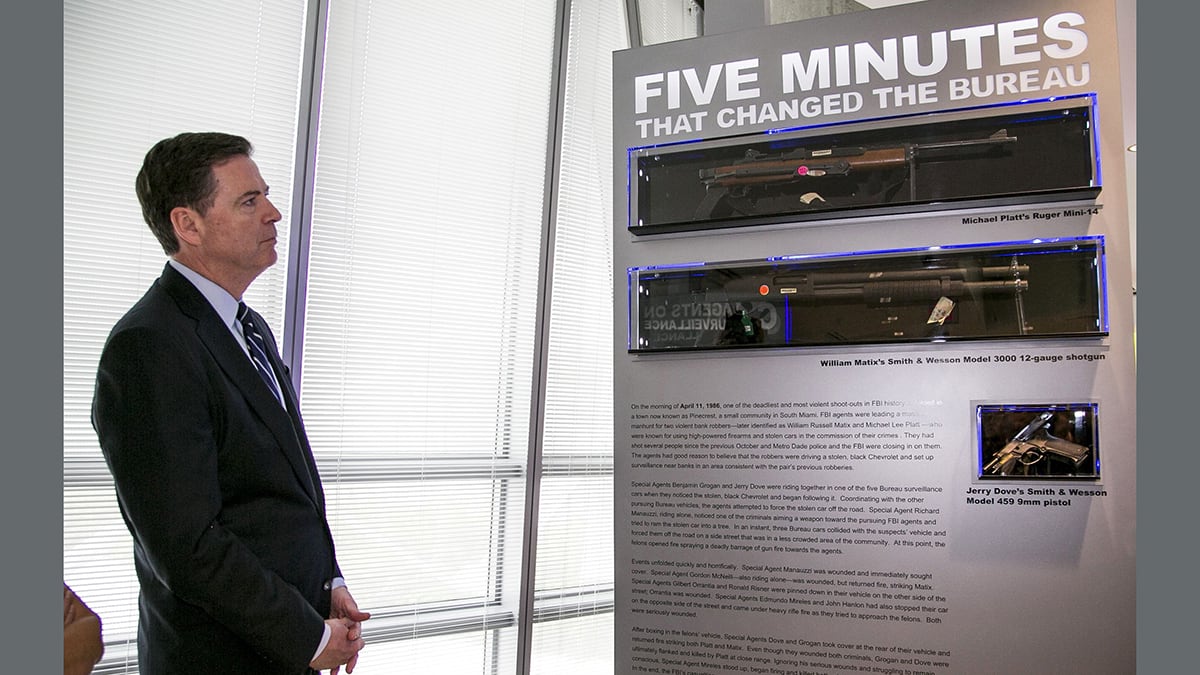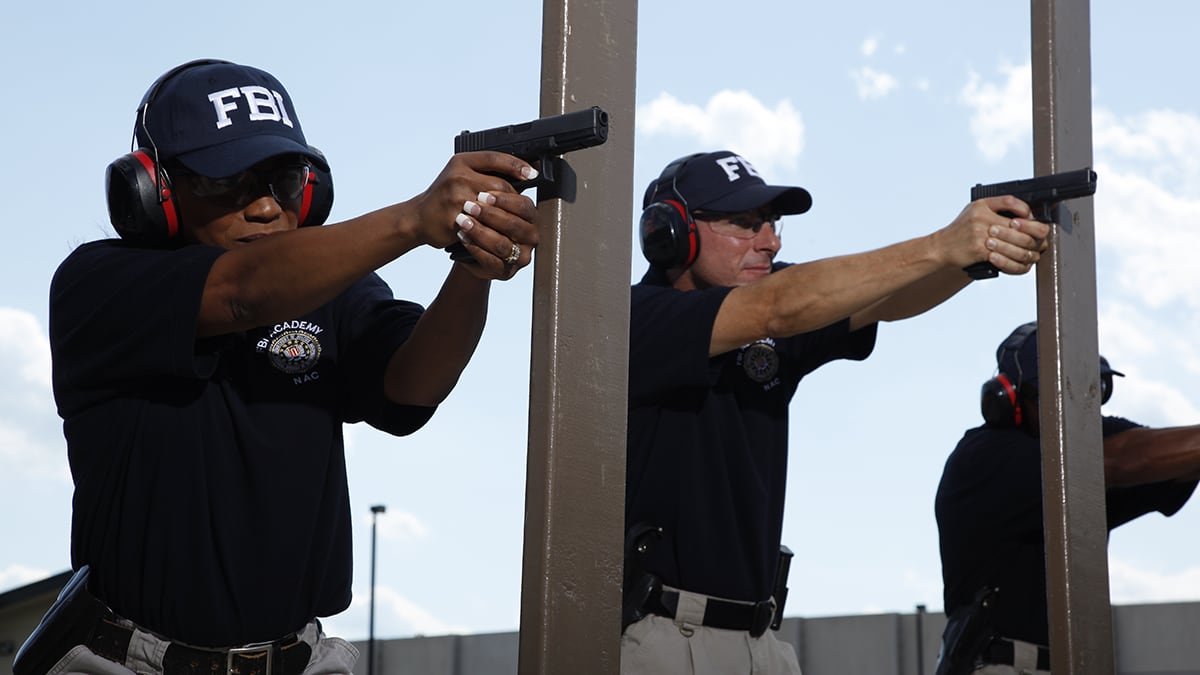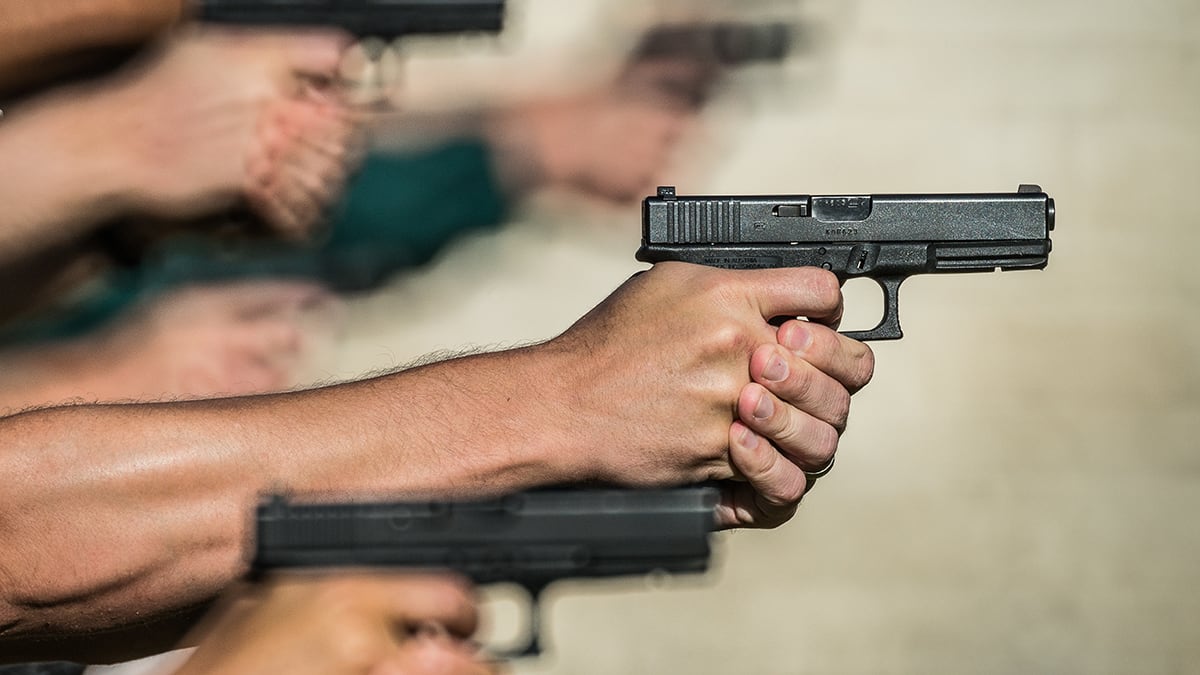Defensive caliber arguments have been going on since the second bullet caliber was invented.
The arguments are often fruitless.
Most people have their favorite round, and that’s that.
But for those haven’t gotten emotionally attached to one cartridge yet, let’s talk about 9mm Parabellum and .40 Smith & Wesson.
It’s an often touted myth that the .40 S&W was developed for the FBI because the 9mm failed in the infamous 1986 Miami shootout. However, the standard issue FBI pistol at the time was a .38 Special revolver.

The G-Men used a 158 grain semi-wadcutter hollow point round known as an “FBI load.”
There were 9mm rounds involved in that gunfight. And one supposedly stopped an inch short of the perpetrator’s heart.
But after the Miami shootout, the FBI determined that they should replace their revolvers with semi-automatic pistols. Semi-automatic pistols hold more rounds and are easier to reload.
And, since they were going to replace all the guns anyway, they figured they’d check out some new rounds, too.
The FBI considered the long-standing 9mm in their search for a new standard issue sidearm. However, the FBI also tested hand loaded 10mm ammunition from the special agent in charge of the FBI Firearms Training Unit, John Hall.
After these tests, the FBI decided they wanted something like a 10mm round, with slightly slower muzzle velocities than standard ammunition.
So, they contracted Smith & Wesson to create one. The .40 S&W was the result.
The FBI ended up using the .40 S&W for almost 30 years before adopting the 9mm in 2015.
Both rounds have been used by militaries, other government agencies, and civilian defenders. So, it’s tough to identify a clear winner here. Or is it?
9mm vs .40 S&W
There’s a lot of focus on terminal ballistics and muzzle energy and whatnot.
But, once upon a time, a firearms and defensive tactics instructor at an Ohio police department did a solid analysis of real-world shootings:
- It took an average of 2.45 9mm rounds to achieve incapacitation.
- It took an average of 2.36 .40 S&W rounds to achieve incapacitation.
Some touted this as a great, decisive victory for the .40 S&W. But it wasn’t.
Since you can’t shoot 2.45 or 2.36 bullets, the numbers have to be rounded up to the next whole bullet. Which means everybody (including the .45 shooters) averages 3 shots to achieve incapacitation.
In fact, study author Greg Ellifritz concluded that the difference in wounding capacity between the different handgun rounds was negligible.

And, before you start in on “knockdown power,” knockdown power doesn’t exist in handguns.
But, Newton’s Third Law does exist. And, it means that if a gun fires a bullet with enough energy to knock a person down, the recoil will be strong enough to knock you down when you shoot it.
Equal and opposite reactions and all that.
Use a rifle if you want good terminal performance.
(Just kidding)
There are three key things to consider when picking the best self-defense caliber beyond terminal performance.
Cost
No matter where you go, the common wisdom is that shot placement is more important than what caliber you shoot.
Now, that’s not to say that caliber doesn’t matter at all. Very small rounds may not penetrate the breastplate or other bones.
And, saying that caliber is irrelevant suggests that you could use a BB gun, so long as you hit them in the right place.
Caliber does matter. But, the emphasis on shot placement is a reminder that, if you miss, you’re effectively shooting a zero caliber bullet.
So, shot placement isn’t king. But, firearm proficiency is.
That’s why the cost of your ammunition matters.
9mm costs about 14 cents a round.
.40 S&W costs about 19 cents a round.
That’s only a 5 cent difference. But, it adds up. Over the course of 1000 rounds, you could pay about $80 more for your ammunition if you’re shooting .40.
Regardless of your budget, you’ll get more training reps for your money, and therefore become more proficient with your gun, if you shoot 9mm — helping with that whole shot placement thing.
Recoil
Recoil is a big sticking point with .40 S&W handguns.
Since the .40 S&W is essentially just a short 10mm round, it features higher breach pressure than both 9mm and .45 ACP.
It’s a heavier round. So, .40 S&W has more felt recoil, no matter what.
However, high pressure rounds tend to produce a snappier recoil impulse, which can be uncomfortable for some shooters. It can also be more challenging to shoot with one hand.
Can you improve your shooting skills enough to manage the recoil and shoot .40 S&W really well? Absolutely.
But, if you spent an equal amount of training resources working on shooting the same handgun, chambered in 9mm, you’d probably be faster and more precise with the 9mm in the end. There’s just less recoil energy to absorb and control in a 9mm round.
Additionally, many manufacturers use the same frame on their 9mm and .40 S&W pistols. This causes longevity issues, because the 9mm frame isn’t built to withstand the recoil force of a .40 caliber round.
So, many .40 S&W pistols don’t last as long as their 9mm counterparts.
Magazine Capacity
No matter what you’re doing, having more rounds in the magazine is better.
In the context of self-defense, reloading could be impossible. So, it’s best to reduce the chances that you’re going to need to reload.
9mm always has higher magazine capacity than .40 S&W, provided you’re comparing two guns of the same size. So, in almost any context, a 9mm handgun enables you to perform better than .40 S&W.
Who Wins?
Now, before everyone rushes to defend their .40 caliber darling: there’s really no need to get defensive. The .40 S&W is a perfectly viable self-defense round.
If you have a .40 pistol that you’ve trained extensively with, switching calibers isn’t an urgent need.
It takes training time and money to change your gun. So, if you’re already geared up for shooting .40 S&W, it may be most efficient and economical to stick with it, depending on how much you shoot.
But, if you shoot a lot and want to shoot better for less money, or if you’re considering using a handgun for personal or home defense, pick up a 9mm handgun and get shooting. You’ll save time and money, without compromising defensive performance.
GearScout contributor Jay Chambers is a pro free speech business owner based in Austin, Texas. Having lived through several natural disasters and more than a few man-made ones (hello 2008), he believes that resilience and self-sufficiency are essential in this increasingly unpredictable world. That’s why he started a business! Jay writes over at Minute Man Review.





